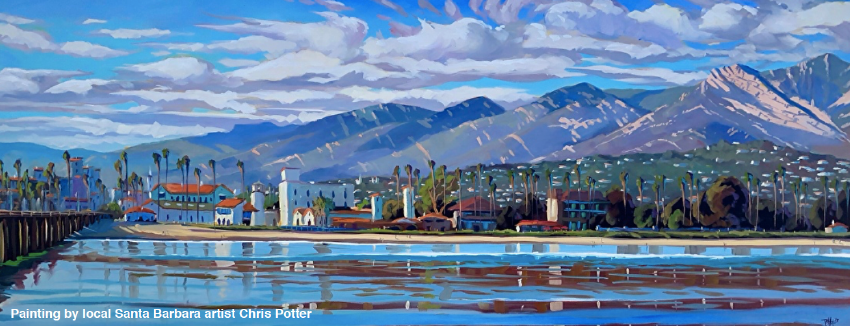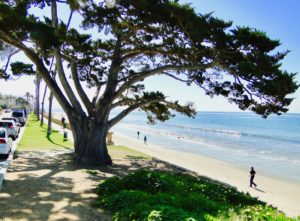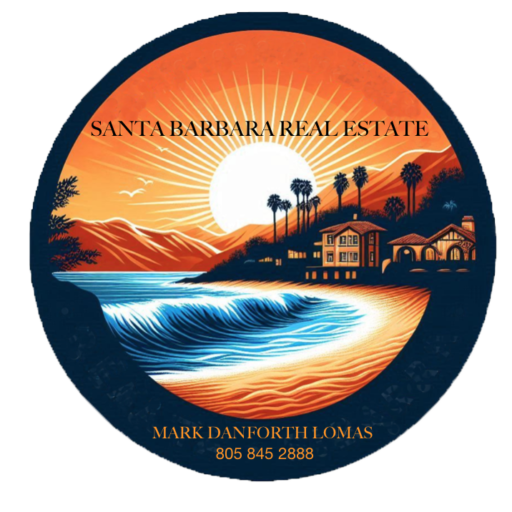
SANTA BARBARA NEIGHBORHOODS
Welcome to Santa Barbara, California! Quietly nestled between the Santa Ynez mountains and the Pacific Coast, Santa Barbara is blessed with grace, style, and a substance all its own. Santa Barbara offers the art and culture of a big city and the heart and hospitality of a small town.
City of Santa Barbara Web Site
UPPER EAST
City Planners regard Eastside as perhaps the most important factor in Santa Barbara’s growth. A higher percentage of older one-family homes exist on the Eastside than in any other city neighborhood. The upper Eastside has been identified as a bailiwick of the wealthy elite since 1895. Santa Barbara’s famous community playhouse, the Lobero Theater, located in the Upper East, was built in 1924 and known as the cultural center years ahead of Los Angeles and San Diego.
Upper East Association Web Site
WESTSIDE
The “Westside Story” of Santa Barbara is laid in our city’s first suburb. Cottage Hospital and its surrounding laboratories, rest homes, professional buildings, clinics, and other medically orientated satellites have made it very convenient for local residents. City Hall recognizes the Westside as the oldest established residential neighborhood in town. Santa Barbara’s Westside is one of the last frontiers for the great American tradition, one that is daily becoming scarce – the single-family home.
MONTECITO
Full of mystique and grandeur, history and beauty, Montecito is approximately eight square miles of hidden neighborhoods, and expansive estates, and has been the destination of choice for celebrities and millionaires for over 100 years. Located a couple of miles east of Santa Barbara, Montecito which is Spanish for “Little Mountain”, first received interest from wealthy Easterners and Midwesterners in the late 1800s. These settlers developed large and lavish estates. Today Montecito offers many and varied options for residential living, such as easy-care condominiums just steps from the beach, a hidden cottage down a tree-shaded lane, as well as large estates on many acres, both old and new. The pace of life here is unhurried, and it is easy to see why Montecito has become a desirable location for big-city dwellers. Whether you’re a movie star or just a curious person, you will find Montecito to be a truly lush paradise!
Montecito Association Web Site
CARPINTERIA
The Carpinteria Valley is located in the Southeast corner of Santa Barbara county. It’s a little piece of coastal paradise tucked midway between Ventura and Santa Barbara. Seeming to shy away from the glare of tourism’s spotlight, but at the same time welcoming all who chance to discover its charms. Carpinteria’s splendid natural setting and small-town charm remain relatively undiscovered. Enjoy the small-town pleasures, where tree-shaded streets, parades and craft shows evoke a gentle way of life. Dozens of antique stores, small shops, and restaurants are clustered along the main streets of Carpinteria and Summerland, making the area a browser’s paradise. Carpinteria is also home to a world-renowned surfing area off Rincon Point and a beautiful swimming beach. Nature smiles kindly of the Carpinteria Valley, making it home to many nurseries.
SUMMERLAND
Population: 1,448 at 2010 census. Summerland is located on the coast directly east of Santa Barbara, and Northwest of Carpinteria and is almost entirely surrounded by the unincorporated community of Montecito. Summerland now proudly sports itself as a town with a unique history, founded in 1889 by Harry Williams the town attracted a unique population as this man with an interest in the supernatural invited others to join him. Summerland now offers numerous antique stores, and other wonderful shops to enjoy!
HOPE RANCH
From 1888 until the 1920s, the Pacific Improvement Company shaped the destiny of Hope Ranch, molding it into it’s present image as a wealthy suburb of Santa Barbara. Many of the amenities offered to members of the Hope Ranch Association since the 1930’s include cabanas for a private beach club fronting the ranch, a polo field, an archery range, a skeet shooting facility, tennis courts, and 30 miles of bridle paths. Space prohibits a full account of Hope Ranch’s outdoor living background, shared by middle-class families as well as the affluent. As a result of this independent spirit, Hope Ranch continues to maintain the lofty standards of suburban living which have been in effect since the late Harold S. Chase advertised his ” sun-kissed, ocean washed, mountain girded, island guarded Hope Ranch” more than half a century ago.
RIVIERA
Bridging the two-mile span that separates Mission and Sycamore Canyons, the sylvan uplift which padres knew as the “mission ridge” has for the past 65 years been known as “the Riviera” due to its resemblance to slopes along the Mediterranean coast of France and Italy. Santa Barbarans lucky enough to live on this ridge attach premium value to their homes because of their unsurpassed views of the city, mountains, sea, and islands. The Riviera is famous for its semi-tropical appearance. The flowing curves at the west end of Alameda Padre Serra today mark the old streetcar right of way, the curves being essential to provide a gradient which electric cars could negotiate. One of the older and more stabilized neighborhoods in the city, the Riviera also ranks as one of the wealthiest and best-educated. “We know how lucky we are not to have to go to Europe to enjoy the Riviera lifestyle,” one cosmopolite commented. “We’ve got a better Riviera right here in Santa Babara.
The Riviera Association Web Site
THE MESA
Mesa, a Spanish word meaning “table,” has been applied to the flat bench fronting the ocean along Santa Barbara’s southwestern border since mission days. The Mesa is one of the oldest historical areas in the city, paradoxically it is one of the youngest residential districts. Artists and writers have a special affinity for Mesa as a carefree place to live. City records show that Mesa’s winter temperatures are 10 to 12 degrees warmer than downtown, and 10 to 12 degrees cooler in the summer. This climate attraction, plus the spectacular marine views, caused a housing boom after World War II. Binding the Mesa Improvement Association, dedicated to protecting the Mesa Lifestyle as one of the most envied in the South Coast area
GOLETA
Tucked between lush green hillsides and the sparkling Pacific lies Goleta Valley. Just minutes from downtown Santa Barbara, the Goleta Community is characterized by comfortable single-family homes, and outstanding public elementary and secondary schools. Plan on enjoying the many recreational opportunities, historic sites, and seasonal festivals. Combining all that this community offers with a mild year-round climate and idyllic natural surroundings, it is easy to see why Goleta is the place to be.
Eucalyptus Hill
This district is a very popular residential area because of its fine views and because of the quality of the houses. There is considerable steep topography within the area that is subject to subdivision. Appropriate techniques must be used in order to avoid excessive grading. Most of the developed lots are medium to large sizes, in some cases containing one or more acres.
City of Santa Barbara’s Link for Eucalyptus Hill
SAMARKAND
Samarkand means “the land of heart’s desire” from the archaic Persian tongue. As the dominating landmark of a hilly, elevated neighborhood, the Samarkand gave its name to an area bounded on the East by Oak Park. The Samarkand neighborhood could point with pride to one of America’s most beautiful and prestigious centers, originally a hotel. The Samarkand District Improvement Association, one of the most active in the city reported that Samarkand has one of the lowest populations in Southern California.
MISSION CANYON
Ethel Barrymore, the late empress of stage and screen, once told a friend, “Fortunate indeed is the person who can live in Santa Barbara, and doubly blessed if his home is located in Mission Canyon.” American newcomers, during the 1850s, were quick to appreciate the sylvan beauty of Mission Canyon, and they began to move and build homes. Above them was a series of rocky cascades known as the Seven Falls. Homes in the Mission Canyon range from humble adobe to magnificent mansions like Glendessary, on the shady lane of the same name This sprawling half-timbered Tudor manor house, was one of the fine homes built before the turn of the century by Christoph Tornoe, a gifted Danish artisan.
SAN ROQUE
Few residential Santa Barbara neighborhoods can boast the rich historical background of the San Roque, and Rutherford Park areas. The neighborhood got its name when the first white men arrived in 1769 with Governor Portola. They camped at the mouth of San Roque Creek, which they named to memorialize the patron saint of invalids, Saint Roque, a Carmelite friar of the 14th century. Now built up, economically stabilized suburb, it is admired for its sweeping curved streets, luxuriant landscaping, and a harmonious blend of many architectural themes: Spanish Colonial, English Tudor, French Normandy, California Redwood, Italianate, and American Colonial, mostly built since 1925. With shopping and banking facilitated at their very doorstep, residents of San Roque feel they are living in one of Santa Barbara’s choicest residential neighborhoods.
Santa Ynez Valley
Located in northern Santa Barbara County, California, the Santa Ynez Valley is just 35 miles from the beaches of Santa Barbara, 125 miles up the coast from Los Angeles, and 300 miles south of San Francisco. The region is easily accessible via vehicles on U.S. Highway 101 and State Highways 154 & 246. For car-free travel, Amtrak offers connecting bus service to Solvang and private aircraft land at Santa Ynez Airport (IZA). Six distinctive communities – Ballard, Buellton, Los Alamos, Los Olivos, Santa Ynez, and Solvang – are located in the Santa Ynez Valley, encircled by the Santa Ynez and San Rafael mountain ranges. The anglicized name “Santa Ynez” (Saint Agnes) derives from the 1804 Old Mission Santa In, the first Spanish settlement in the Valley. Prior to the arrival of Spanish and European settlers, Native Americans resided in the Santa Ynez Valley for thousands of years. Today, members of the Santa Ynez Band of Chumash Indians have a Federally recognized reservation featuring the Chumash Casino Resort adjoining the township of Santa Ynez. The Santa Ynez Valley’s communities are all known for genuine old-world hospitality and friendliness; each offering distinctive character and amenities.
Contact Us
About Us
Analyze Your Investment
iAnalyzeREI: Real Estate Investment Analysis
Santa Barbara Links
- City of Santa Barbara
- County of Santa Barbara
- Culture Santa Barbara
- Debris Flow Maps
- FEMA MAP
- Montecito Journal
- Noozehawk
- Pearl Chase Society
- Ready Santa Barbara
- Santa Barbara Magazine
- Santa Barbara Realtors
- Santa Barbara Zoo
- Santa Barbara's "Lotusland"
- Santa Barbara's Hiking Trails
- Santa Barbara's News Press
- SB EdHat Local News
- SB Farmers Markets
- SB Independent Newspaper
- SB Museum of Natural History
- SB Public Libraries
- SB Senior Care Guide
- SB's KEYT Television
- Senior Care Resources
- Senior Guide to Medicare Benefits
- Siteline Santa Barbara
- The Mojo aka The Montecito Journal
- The Montecito Association
- Unity Shoppe
Categories
Archives

This website is not the official website of Sun Coast Real Estate. Sun Coast Real Estate does not make any representation or warranty regarding any information, including without limitation its accuracy or completeness, contained on this website. Real Agents affiliated with Sun Coast Real Estate are independent contractors and not employees.
3112 State Street, Santa Barbara, California 93105
Mark Lomas BRE 00898298
Kirsten Wolfe BRE 01309570

